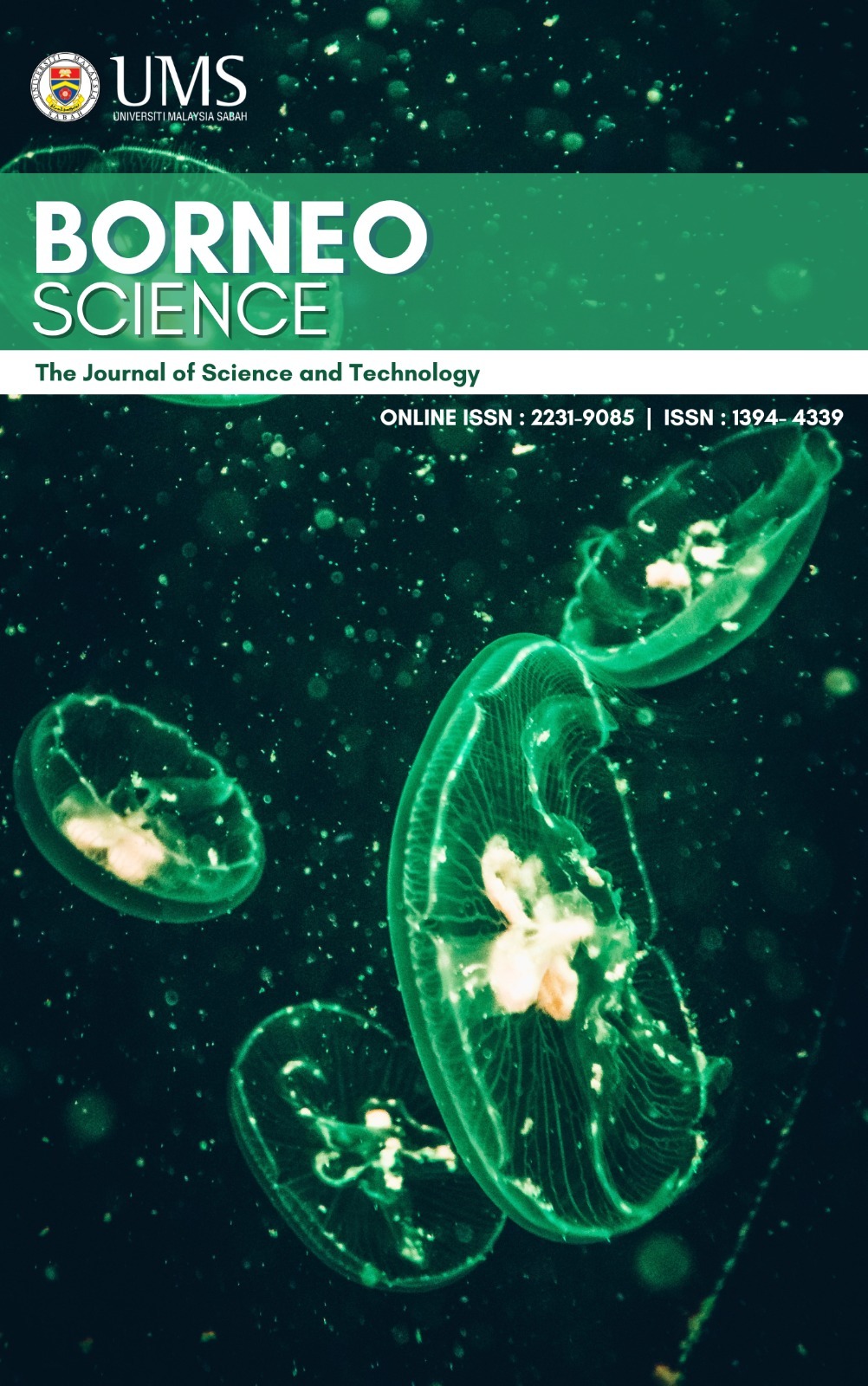IRIS RECOGNITION USING SUPERVISED REGULARIZED MULTIDIMENSIONAL SCALING
DOI:
https://doi.org/10.51200/bsj.v42i2.4464Keywords:
Multi-Dimensional Scaling, Radial Basis Function, Iterative Majorization, Iris recognition, Biometrics, k-NNAbstract
Iris Recognition is regarded as the most reliable and accurate biometric identification system available. In Iris Recognition, a person is identified by the iris region of the eye using image processing, pattern matching and the concept of neural networks. A typical Iris Recognition system involves three steps, Iris pre-processing, Iris feature extraction and Iris Classification. Most of the researchers use Daugman’s integro-differential operator and Daugman’s rubber sheet model for pre-processing. A number of feature extraction methods can be used to achieve a reasonable recognition rate. In our work we have used Supervised Regularized Multidimensional Scaling proposed recently for feature extraction that is used directly on iris image regarded as high dimensional vector. The method uses radial basis function to select some images as centres and then projects higher dimensional vectors into a lower dimensional space using an Iterative majorization algorithm. The projection is done in such a way that data of same class projects together and also it selects the most effective features that leads to better recognition rate. This approach excludes the pre-processing that saves computation time. We have compared our approach with Principal Component Analysis and implemented on a benchmarking data MMU iris data. K-Nearest Neighbor classifier is used for the classification. Numerical experiments show that Supervised Regularized Multidimensional Scaling successfully achieves better recognition and outperforms some other approaches such as Principal Component Analysis with and without pre-processing of iris images.
References
Abdo, A. A., Lawgali, A. and Zohdy, A. K. (2020). Iris Recognition based on Histogram Equalization and Discrete Cosine Transform’, ICEMIS 20 Proceedings of the 6th International Conference on Engineering and MIS, doi: 10.1145/3410352.3410758.
Alam, M. M., Khan, M. A. R., Salehin, Z. U., Uddin, M., Soheli, S. J., $&$ Khan, T. Z. (2020). Combined PCA-Daugman Method : An Effcient Technique for Face and Iris Recognition. Journal of Advances in Mathematics and Computer Science, 35(5), 34-44. doi: 10.9734/jamcs/2020/v35i530280.
Argyriou, A., Evgeniou, T. and Pontil, M. (2007). Multi-task Feature Learning in Advances in Neural Information Processing Systems (eds. B. Schoelkopf, J. Platt, and T. Hoffman), MIT Press.
Argyriou, A., Evgeniou, T. and Pontil, M. (2008). Convex Multi-task Feature Learning, Machine Learning, Special Issue on Inductive Transfer Learning, 73, 243-272.
Bodade, R. M. and Talbar, S.N. (2014). Iris Analysis for Biometric Recognition Systems.
Chirchi, V.R.E. and Waghmare, L. (2013). Feature Extraction and Pupil Detection Algorithm Used for Iris Biometric Authentication System, International Journal of Signal Processing, Image Processing and Pattern Recognition, 6(6), 141 –160.
Chitte, P. and et al., (2012). IRIS recognition system using ICA, PCA, Daugman’s Rubber Sheet Model together, International Journal of Computer Technology and Electronics Engineering, 2(1), 16–23.
Chowhan, S.S., Shinde, G.N. (2009). Evaluation of statistical feature encoding techniques on iris images,WRI World Congress on Computer Science and Information Engineering, 7, 71 –75.
Daugman, J. (2002). How iris recognition works, International Conference on Image Processing, 1.
Dua, M., Gupta, R., Khari, M. and Crespo, R. G. (2019). Biometric iris recognition using radial basis function neural network, Soft Computing, 23, 11801 –11815.
El-Tarhouni, W., Abdo, A. and Elmegreisi, A. (2021). Feature fusion using the Local Binary Pattern Histogram Fourier and the Pyramid Histogram of Feature fusion using the Local Binary Pattern Oriented Gradient in iris recognition,” 2021 IEEE 1st International Maghreb Meeting of the Conference on Sciences and Techniques of Automatic Control and Computer Engineering MI-STA, 853-857, doi: 10.1109/MI-STA52233.2021.9464473.
Gupta, R. and Kumar, A. (2013). An Effective Segmentation Technique for Noisy Iris Images, International Journal of Application or Innovation in Engineering & Management, 2(12), 118–125.
Jahan, S. and Qi, H. D. (2016). Regularized Multidimensional Scaling with Radial Basis Functions, Journal of Industrial and Management Optimization 12, 543–563.
Jahan, S. (2021). Discriminant analysis of regularized multidimensional scaling, Numerical Algebra, Control & Optimization, doi: 10.3934/naco.2020024. 11 (2), 255-267.
Jahan, S. (2018). On Dimension Reduction using Supervised Distance Preserving Projection for Face Recognition Universal Journal of Applied Mathematics, 6(3), 94– 105.
Jiawei, K., Micheline, K. and Jian, P., Data Mining Concepts and Techniques, Publisher: Morgan Kaufmann. Jillela, R. R. and Ross, A. (2015). Segmenting iris image in the visible spectrum with application in mobile biometrics, Pattern Recognition Letters, 57, 4–6.
Moravec, P. Gajdos, P., Snasel, V., K. Saeed, K. (2009). Normalization impact on SVD-based iris recognition International Conference on Biometrics and Kansei Engineering (ICBAKE), 60– 64.
Multimedia University: MMU1 and MMU2 Iris Image Databases, 2008. http://pesona.mmu.edu.my/ ccteo.
Raja, K., Chhootaray, R. and Pattnaik, S. (2011). PCA based Iris Recognition using DWT, Int. J. Comp. Tech. Appl, 2, 884–893.
Sallehuddin, A. F. H., Ahmed, M. I., Ngadiran, R. and Isa, M. N. M. (2002). A Survey of Iris Recognition System, Journal of Telecommunication, Electronic and Computer Engineering, 8(4) ,133–138.
Sanderson, S. and Erbetta, J. (2000). Authentication for secure environments based on iris scanning technology, IEE Colloquium on Visual Biometrics, doi: 10.1049/ic:20000468.
Sheela, S. and Vijaya, P. (2010). Iris recognition methods-survey, International Journal of Computer Applications, 3(5), 19–25.
Sun, J., Lu, Z.-M. and Zhou, L. (2013). Iris Recognition using curvelet transform based on principal component analysis and linear discriminant analysis, J Inf Hiding Multimedia Signal Process, 5(3)567–573.
Theodoridis, S. and Konstantinos, K., An Introduction to Pattern Recognition, Publisher: Academic Press.Webb, A.R. (1995). Multidimensional Scaling by iterative majorization using radial basis functions, Pattern Recognition, 28, 753–759.
Webb, A.R. (1996) (a). Nonlinear feature extraction with radial basis functions using a weighted multidimensional scaling stress measure, Pattern Recognition, IEEE Conference Publications 4, 635-639.
Webb, A.R. (1996) (b). An approach to nonlinear principal component analysis using radially symmetric kernel functions, Statistics and Computing, 6, 159-168.
Wildes, R. (1997). Iris recognition: an emerging biometric technology. Proceedings of the IEEE, 85(9). Woodard, Damon L. and Ricanek, K. (2009). Iris Databases in Encyclopaedia of Biometrics, Springer US, 770–774.






